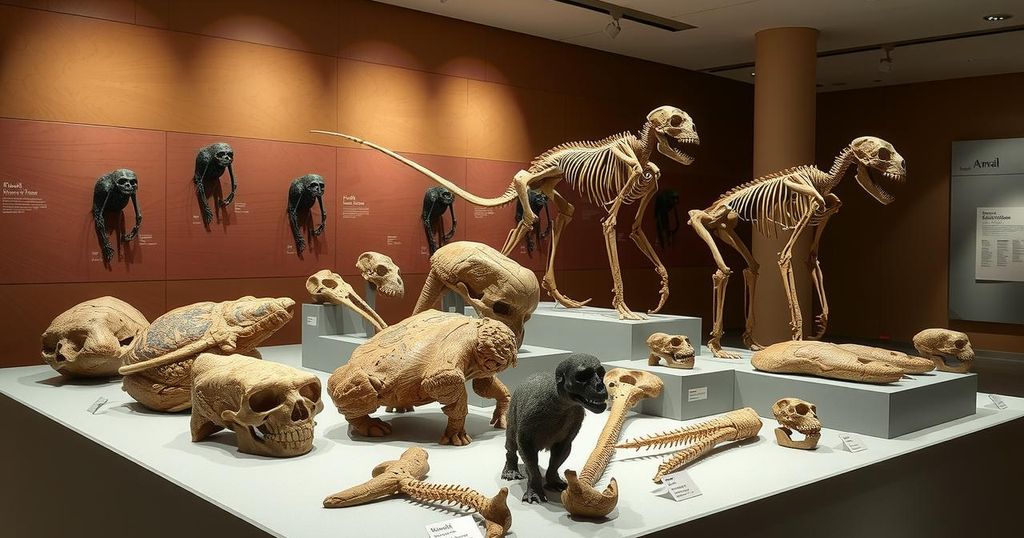AI
Science
Tech
ALAN TURING, ARTIFICIAL INTELLIGENCE, ASIA, DARTMOUTH, DEEPMIND, ENVIRONMENTAL IMPACT, GOOGLE, INDIA, JOHN MCCARTHY, MARVIN MINSKY, MASSACHUSETTS INSTITUTE OF TECHNOLOGY, MENTAL HEALTH, MINSKY, MIT, NEW DELHI, NORTH AMERICA, SCIENCE, SCIENCE_TECHNOLOGY, TECHNOLOGY, TURING, UNITED STATES
Liam Kavanagh
0 Comments
Decoding AGI: The Quest for Intelligent Machines and Their Impact on Our Future
Artificial General Intelligence (AGI) is defined as AI that can match human cognitive abilities across various tasks. A recent DeepMind paper forecasts the emergence of powerful AI by 2030, warning of potential risks. The history of AGI spans over seventy years, evolving through contributions from notable figures, yet its definition remains debated. Researchers call for a careful understanding of AI’s capabilities for effective future policies.
In the ever-evolving landscape of Artificial Intelligence (AI), the concept of Artificial General Intelligence (AGI) often steals the spotlight. Defined broadly as AI capable of matching human intelligence across a multitude of tasks, AGI draws attention from tech companies who speculate about its arrival. Recently, a DeepMind paper suggested that powerful AI systems could emerge by 2030, but they also warned of potential severe consequences for humanity.
A historical journey of AGI reveals that fascination with intelligent machines spans over seventy years. The pivotal moment came in 1950 when Alan Turing proposed a test—machines could be deemed intelligent if they could communicate indistinguishably from humans. In 1956, John McCarthy convened a meeting at Dartmouth that laid the foundation of AI, exploring how machines could simulate learning and intelligence.
The dream of human-level machines ignited further predictions. Marvin Minsky, in the early 1970s, envisioned a machine with human-like intelligence, swiftly self-learning and eventually surpassing human capabilities. Although progress was slower than anticipated, innovations stemming from early AI principles eventually powered today’s applications. In the late 1990s, the term AGI gained traction as Mark Gubrud described AI systems that could rival human complexity and reasoning in various fields.
Shane Legg popularized the term further in 2001, coining it for a collection of essays on AI. The drive for AGI crystallized at an annual conference, marking a unified aim for researchers. Yet, even today, definitions vary, with Murray Shanahan emphasizing broad learning capabilities as central to AGI. In 2015, OpenAI’s founding charter defined AGI as autonomous systems surpassing human performance in key economic activities.
Recent insights from DeepMind identified five levels of AGI, ranging from “Emerging”—equivalent to an unskilled human—to “Superhuman” intelligence, noted as only having been reached henceforth. Dario Amodei of Anthropic described AGI as an imprecise term, urging a preference for labels void of hype.
Debates linger around the nature of intelligence itself. Yann LeCun, a pioneer in Deep Learning, argues that human intelligence’s specialized nature renders the term AGI misleading. He foresees future machines equaling and surpassing human intelligence, though not achieving true “general” intelligence as the word denotes.
Lastly, the existential implications of AGI evoke caution among researchers. Princeton’s Narayanan and Kapoor urge a grounded understanding of AI’s capabilities to shape sharper policies and to avoid framing current risks in a strictly AI context. Their conclusion emphasizes understanding technology’s threats rather than relying on speculative fears of rogue AI.
AGI, as a concept, encapsulates both excitement and trepidation in the world of Artificial Intelligence. History illustrates a pathway from theoretical foundations to potential futures marked by profound capabilities. As society navigates this complex terrain, it is critical to focus on understanding AI’s implications and revisiting the definitions and expectations surrounding AGI. By doing so, we can better address the real risks and benefits that technology presents, steering clear of sensationalist narratives.
Original Source: indianexpress.com




Post Comment